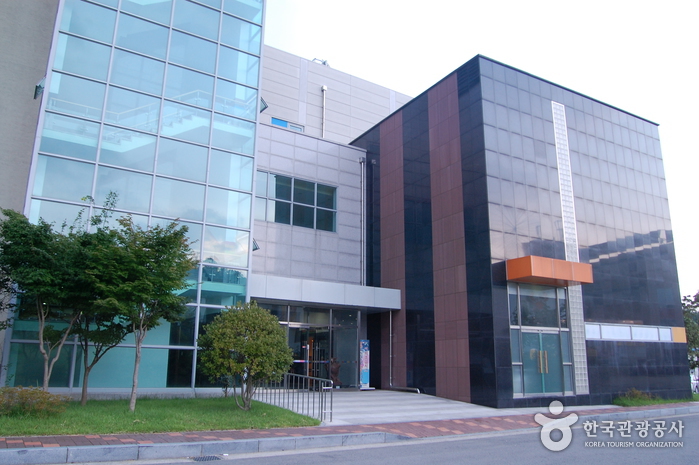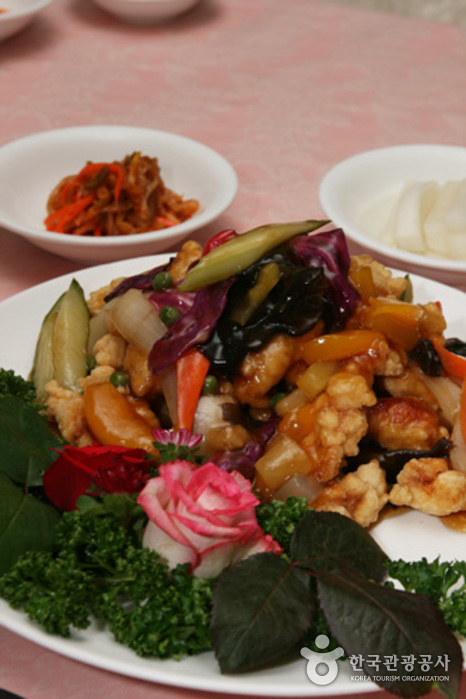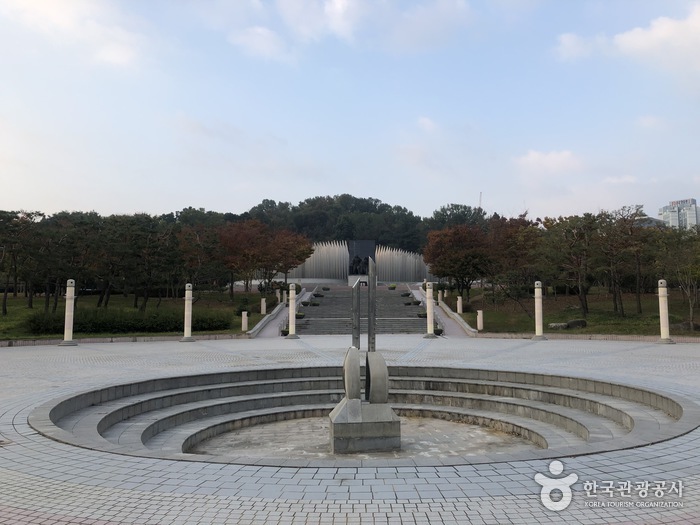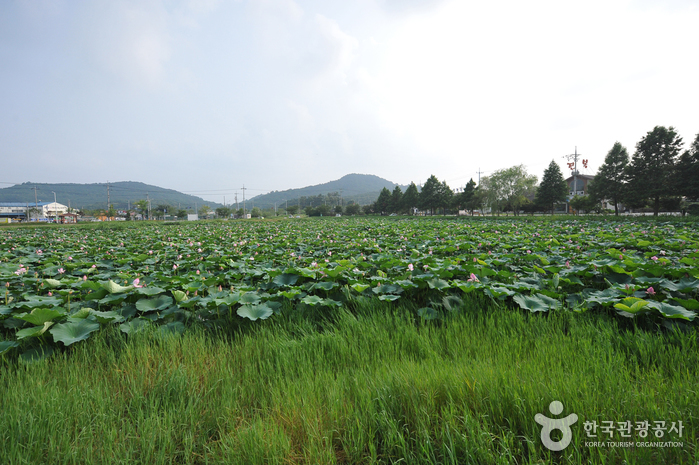Jungoe Park (중외공원)
13.8Km 13802 2021-10-25
52, Haseo-ro, Buk-gu, Gwangju
+82-62-613-7100
Jungoe Park is one of the nation's most famous leisure spaces. There is a children's grand park, the Olympic Garden, and the Olympic Monument. The children's grand park is especially popular on weekends and holidays.
There is also a folk museum, an education center, and the Biennale Exhibition Hall in the Biennale & Museum section of the park.
The park is most popular during fall for its beautiful foliage. In addition, the Rainbow Bridge is a symbol of the Biennale and was installed during the 1st Gwangju Biennale.
Gwangju Arts Center (광주예술의전당)
13.8Km 16576 2024-02-14
60 Bungmun-daero, Buk-gu, Gwangju
+82-62-613-8333
Opened in 1991, the Gwangju Arts Center is the cornerstone of culture and arts in Gwangju. It offers high-quality performances and exhibitions across various genres, including Korean traditional music, opera, classical music, and ballet. The center boasts a range of artistic facilities, such as a main theater, a secondary theater, a traditional music hall, a sculpture garden, and an amphitheater. The main theater has a seating capacity for up to 1,500 people.
Namdo Folk Food Exhibition Room & Honam Cultural Material Pavilion (남도향토음식박물관·호남문화자료전시관)
14.1Km 15136 2021-11-27
477, Seoljuk-ro, Buk-gu, Gwangju
+82-62-410-6642
Located in Gwangju, the Namdo Folk Food Exhibition Room was established to preserve and promote the local foods of the Namdo region. The museum has a museum shop, both permanent exhibitions and special planned exhibitions, and a studio where visitors can watch a variety of video content related to the local foods. In the Honam Cultural Material Pavilion, literature, clothing, and artwork from the region are on display.
The museum building was designed to resemble both the long, rectangular presses used to make patterned rice cakes and the Ipseokdae Rock of Mudeungsan Mountain, a symbol of Gwangju. Even the colors of the building’s walls hold special significance. The obangsaek (five colors; blue, white, red, black, and yellow) symbolize the cardinal directions, the seasons, the major organs in the body, different tastes, feelings, and philosophy.
Macheollu (마천루)
14.2Km 4758 2019-04-16
236, World Cup 4gang-ro, Seo-gu, Gwangju
+82-62-381-8006
Macheollu is a popular Chinese cuisine restaurant, especially for familiy and friend gatherings. The restaurant also has “couple” menus for young couples.
Gwangju National Museum (국립광주박물관)
14.3Km 24282 2023-11-28
110 Haseo-ro, Buk-gu, Gwangju
+82-62-570-7000
Gwangju National Museum, opened on December 6, 1978, was established to promote the development of cultural arts and to foster patriotism. Gwangju National Museum’s goal is to conserve cultural values through the collection and preservation of historical and valuable artifacts found in the Gwangju and Jeollanam-do regions as well as make contributions to the community through continuous research, exhibition, and education. With over 130,000 artifacts as well as various educational and experience programs, the museum aims to provide an enjoyable cultural center for visitors.
Olive Young - Gwangju 518 Park Branch [Tax Refund Shop] (올리브영 광주518공원)
14.8Km 0 2024-04-18
90, Sangmuminju-ro, Seo-gu, Gwangju
-
May 18th National Cemetery (국립 5·18 민주묘지)
14.8Km 26624 2024-07-11
200 Minju-ro, Buk-gu, Gwangju
+82-62-268-0518
The May 18th National Cemetery in Gwangju is a symbol of freedom and democracy. The cemetery holds the graves of 764 victims of the May 18th Democratic Uprising in 1980, seven structures, and many monuments.
Mugaksa Temple (무각사)
14.9Km 9314 2021-09-10
230, Uncheon-ro, Seo-gu, Gwangju
+82-62-383-0108
Nestled at the foot of Yeouisan Mountain in the business center of Gwangju, Mugaksa Temple is an urban Buddhist Temple. Unlike other urban Buddhist Temples, Mugaksa Temple has all the elements of a traditional temple. The temple is used as a cultural resting area and artistic spot for meetings without any religious barrier. The temple is also the starting point of the 2 kilometer walking trail to the 5.18 Memorial Park, leading to a constant flow of visitors.
May 18th National Cemetery (5·18 기념공원)
14.9Km 31955 2024-02-29
152 Naebang-ro, Seo-gu, Gwangju
+82-62-376-5197
May 18th National Cemetery is a park established to commemorate the democratization movement that took place in Gwangju in May 18th, 1980. The park features facilities such as the May 18th Memorial Culture Center, Daedong Plaza, Gwangju Student Movement Memorial Tower, memorial spaces, and the Oweol Pavilion. It serves as a meaningful space for reflecting on the history of Korean democracy and honoring the sacrificial spirit of the martyrs who lost their lives during the democratization movement.
Jeonpyeongje Reservoir (전평제)
15.0Km 6884 2021-04-29
9, Jeonpyeong-gil, Seo-gu, Gwangju
+82-62-365-4114
Jeonpyeongje Reservoir was built in 1943 to supply water for agricultural purposes to farms in the Maewol-dong and Byeokjin-dong regions as well as to prevent both floods and droughts. Starting in 1999, the reservoir was changed to a rest area, with a wooden deck crossing the reservoir to the man-made island in the middle. The area now serves as a waterside relaxation and eco-exploration space for family visitors.



![Olive Young - Gwangju 518 Park Branch [Tax Refund Shop] (올리브영 광주518공원)](http://tong.visitkorea.or.kr/cms/resource/24/2886924_image2_1.jpg)


 English
English
 한국어
한국어 日本語
日本語 中文(简体)
中文(简体) Deutsch
Deutsch Français
Français Español
Español Русский
Русский